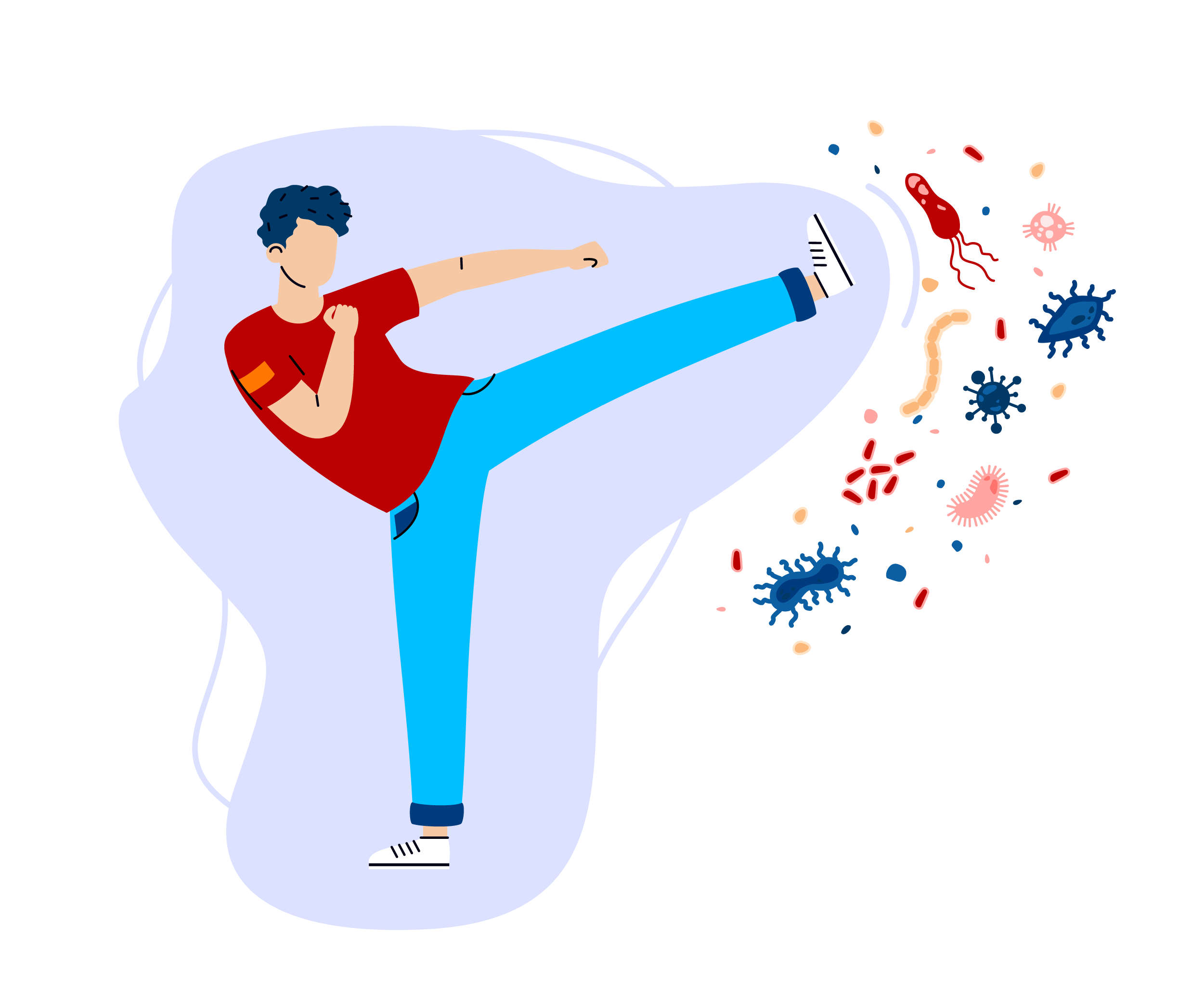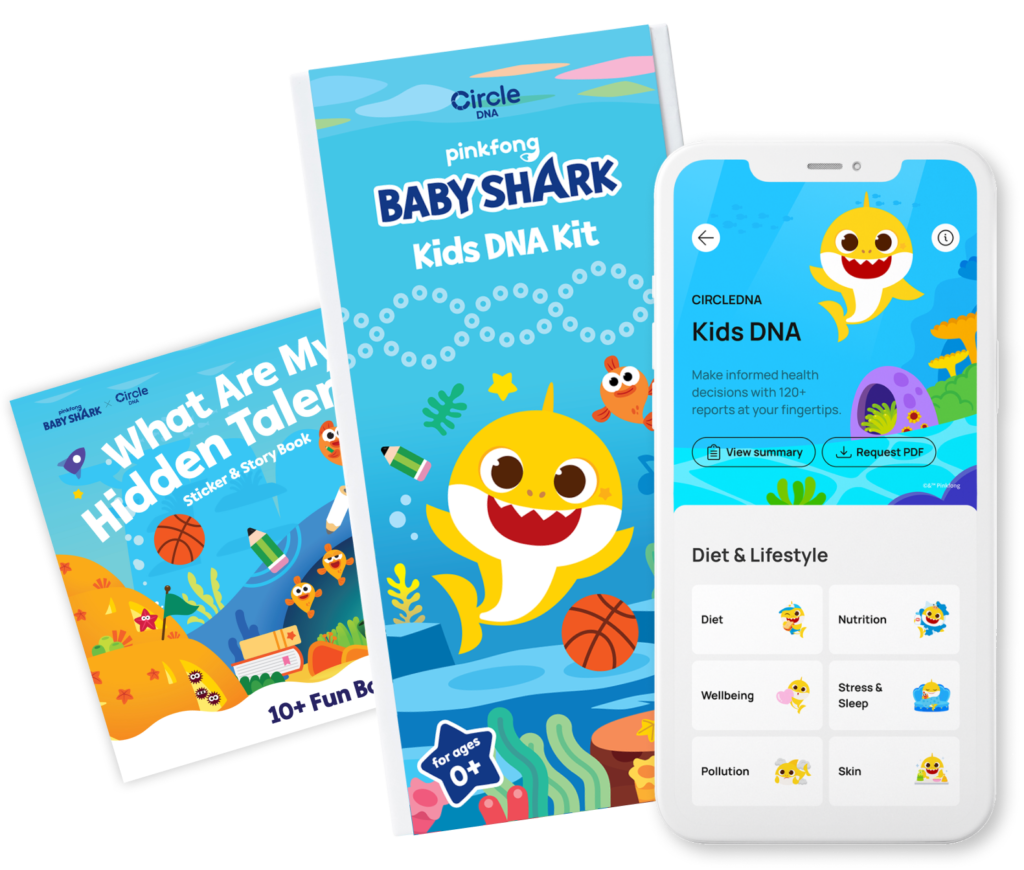
The immune system is your child’s personal set of shields, designed to protect the body from harmful invaders. A well regulated immune system reduces the risk of developing allergies and autoimmune diseases, whereas a weak immune system will interfere with your child’s growth and development. But what are the mechanics behind this crucial biological defense mechanism?
Innate Immunity – The Outer Shield
The innate immune system provides the first-line defense against pathogens. It includes the skin and mucous membranes that act as armor, and cells that patrol and combat invading pathogens.
Adaptive Immunity – The Inner Shield
The adaptive immune system is a specialized shield activated when the outer shield is breached. It recognizes specific pathogens and remembers them for future attacks. It includes B-cells, which produce pathogen-specific antibodies, and T-cells that destroy infected cells.
Vaccinations – Shield Training
Vaccines, akin to “shield training exercises,” introduce harmless pathogen fragments to the immune system, getting it battle ready by recognizing the enemy and preparing antibodies, enhancing its response time.

Supercharge Your Child’s Immune Armor with Genetic Testing
Let’s get battle ready! Here’s how the implementation of genetic testing can help you understand and manage your child’s immune system.
- Spotting the Stealthy Villains: Some children are born with stealthy genetic disorders, known as Primary Immunodeficiency Diseases (PIDDs), including Severe Combined Immunodeficiency (SCID) and Common Variable Immune Deficiency (CVID). These conditions can make their immune shields more susceptible to attacks. But fear not! Genetic testing acts as our high-tech radar, detecting these conditions early and allowing for prompt intervention, saving lives along the way.
- Detecting Autoimmune Disorders: Certain genetic markers are associated with a higher risk of developing autoimmune diseases, such as Type 1 Diabetes or Juvenile Rheumatoid Arthritis. If your child is showing symptoms that suggest an autoimmune disorder, genetic testing can serve as a trusty lie detector to either confirm the diagnosis, or help you assess the risk of developing the disease.
- Personalized Power-Up Plans: Did you know that some drugs used to treat immune-related conditions work better for people with specific genetic markers. Imagine knowing this information before-hand, and being able to work with a pediatrician to come up with a personalized treatment plan. After all, every superhero needs their custom superhero suit!

Five Easy Ways To Level Up Your Child’s Immunity Shield
Armed with the knowledge of your child’s genetic data, it’s time for the superhero training montage!
- Balanced Diet – Power-Up Foods: Just like superheroes need their special fuel, your child needs a balanced diet. Power-up foods are packed with essential vitamins and minerals that strengthen their immune shields. Fruits, vegetables, lean proteins, and whole grains are all part of this super diet. Don’t forget these immunity-boosting superstars: citrus fruits, bell peppers, broccoli, yogurt, and nuts!
- Sleep – Recharging the Shield: Even superheroes need to recharge. For your child, this means getting a good night’s sleep. Depending on their age, they need between 8 and 14 hours of sleep each night. Restful sleep allows their body to repair and regenerate, ready to defend against the next day’s villains – germs and viruses.
- Exercise – Super Strength Training: Regular physical activity is like strength training for your child’s immune system. It boosts blood circulation, helps to reduce stress, and contributes to better sleep – all of which are essential for a high-functioning immune system. Whether it’s soccer, swimming, cycling, or just playing in the park, make sure they get plenty of active playtime.
- Reduce Stress – Mind Shield Training: Even for little superheroes, stress can be a kryptonite, weakening their immune shields. Encourage relaxing activities like reading, art, or listening to music and teach them simple mindfulness exercises or breathing techniques. A happy, relaxed mind makes for a stronger immune shield.
- Vaccinations – Shield Upgrades: Vaccines are like vital shield upgrades, providing your child’s immune system with the necessary information to fight off specific germs. They train the immune shield, making it stronger and more effective. Ensure your child’s vaccinations are up-to-date as per your healthcare provider’s schedule.
Every child is unique, and you can make empowered and informed choices that can ensure your child’s immune system is protected through a simple DNA test. Not forgetting to put the fun in immune function, our Baby Shark x CircleDNA Kids Test comes with a Baby Shark sticker and storybook with over 20 fun activities for the whole family. Order the Baby Shark x CircleDNA Kids Test for your little superhero today and receive 120 comprehensive DNA reports spanning 13 categories, including nutritional needs, sports affinity, sleeping patterns, stress tolerance, and much much more.
References
- Alberts B, Johnson A, Lewis J, et al. Molecular Biology of the Cell. 4th edition. New York: Garland Science; 2002. Innate Immunity. Available from: https://www.ncbi.nlm.nih.gov/books/NBK26846/
- Janeway CA Jr, Travers P, Walport M, et al. Immunobiology: The Immune System in Health and Disease. 5th edition. New York: Garland Science; 2001. The Adaptive Immune System. Available from: https://www.ncbi.nlm.nih.gov/books/NBK27060/
- Simon, A.K., Hollander, G.A. & McMichael, A. (2015). Evolution of the immune system in humans from infancy to old age. Proceedings of the Royal Society B: Biological Sciences, 282(1821), 20143085. https://doi.org/10.1098/rspb.2014.3085
- Kollmann, T. R., Kampmann, B., Mazmanian, S. K., Marchant, A., & Levy, O. (2017). Protecting the Newborn and Young Infant from Infectious Diseases: Lessons from Immune Ontogeny. Immunity, 46(3), 350–363. https://doi.org/10.1016/j.immuni.2017.03.009







